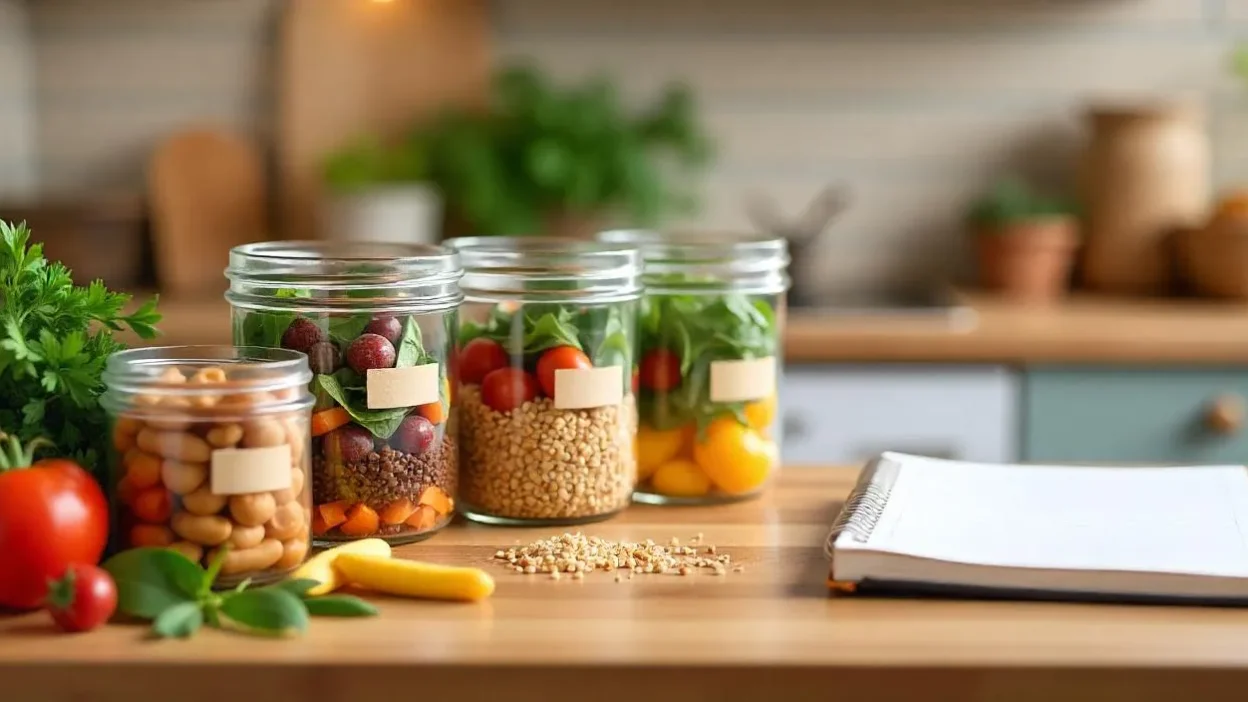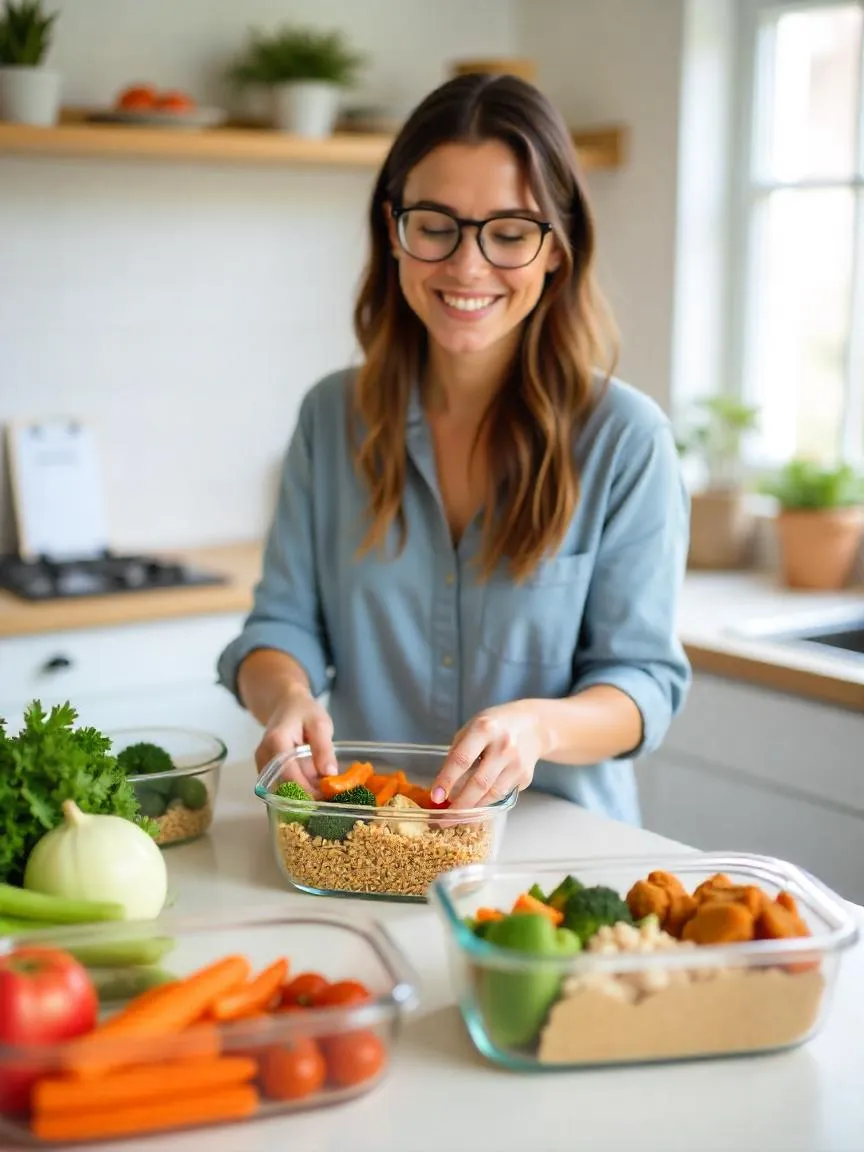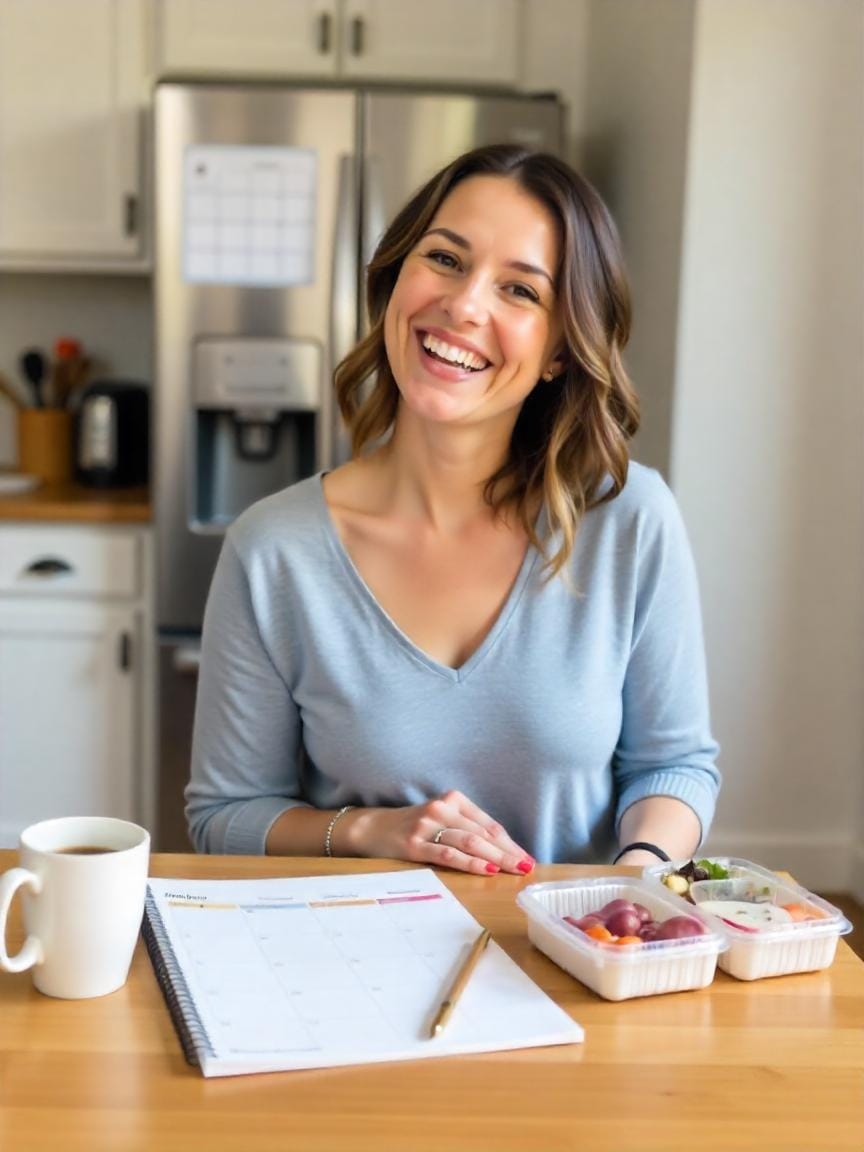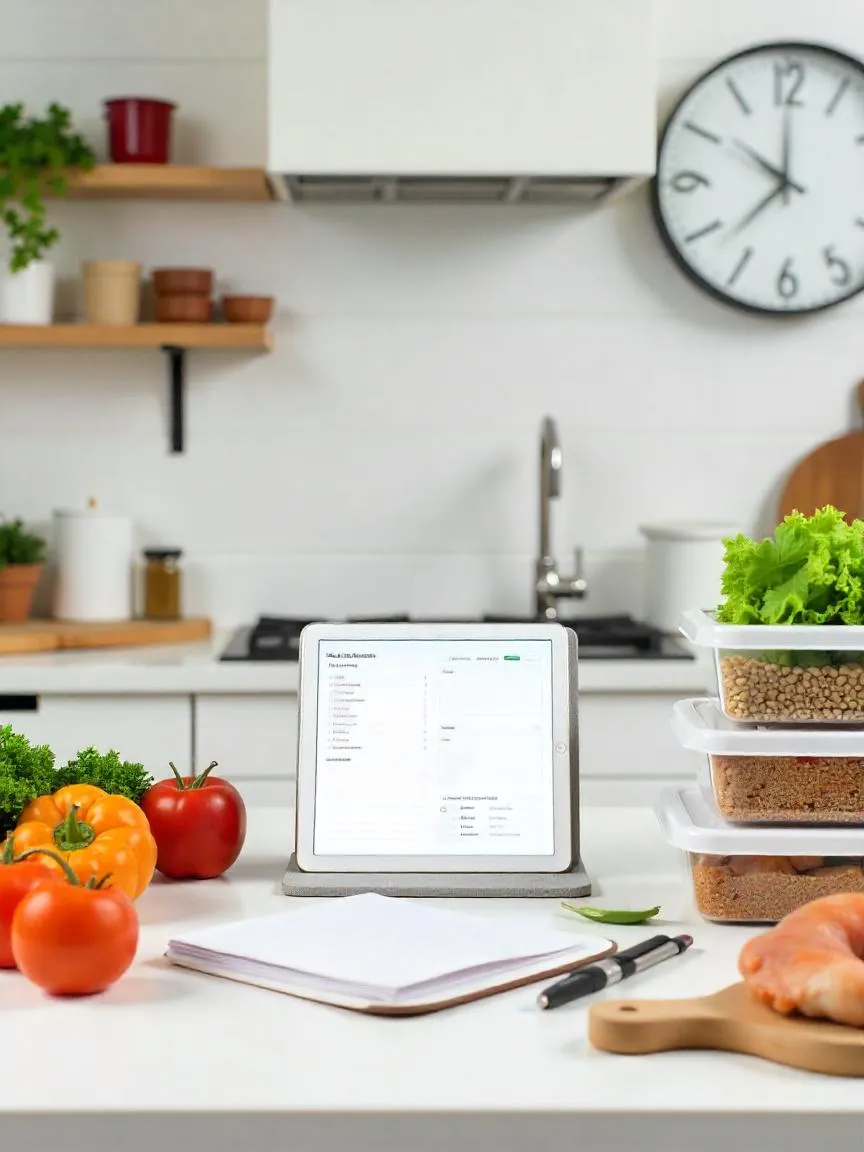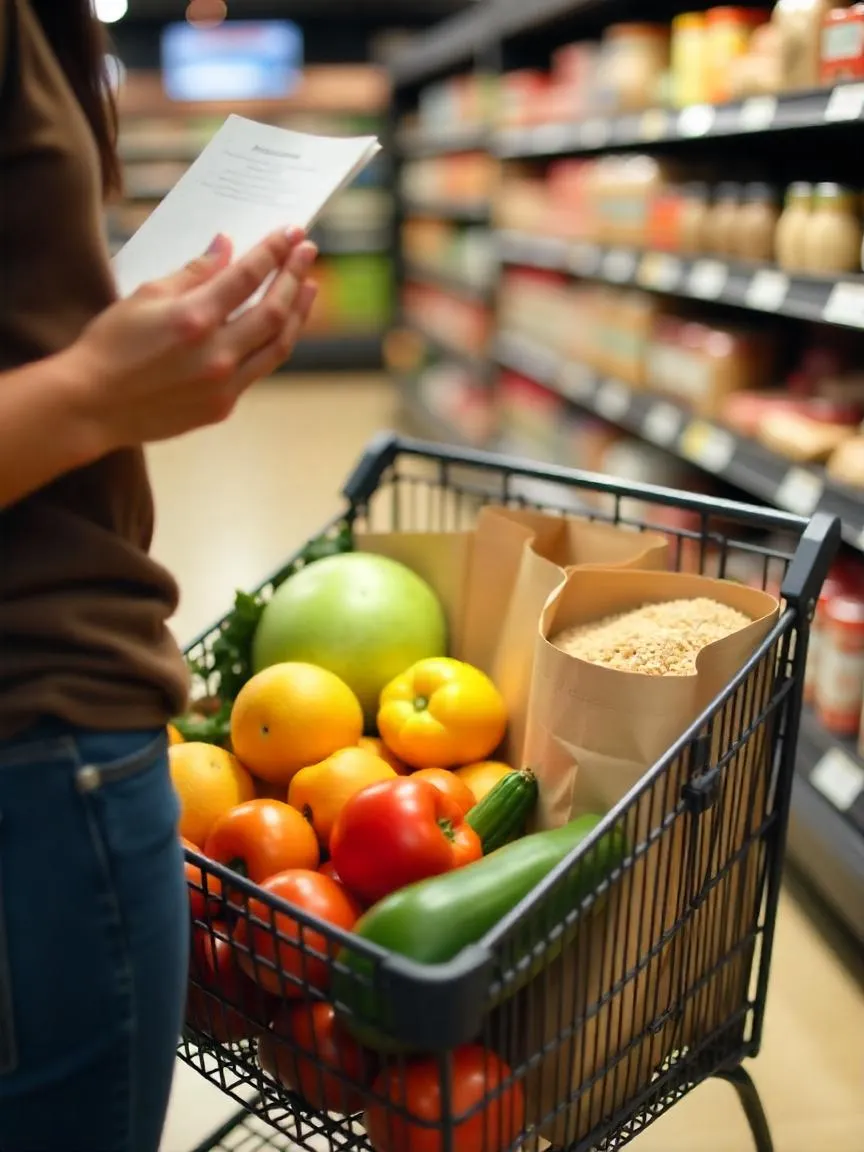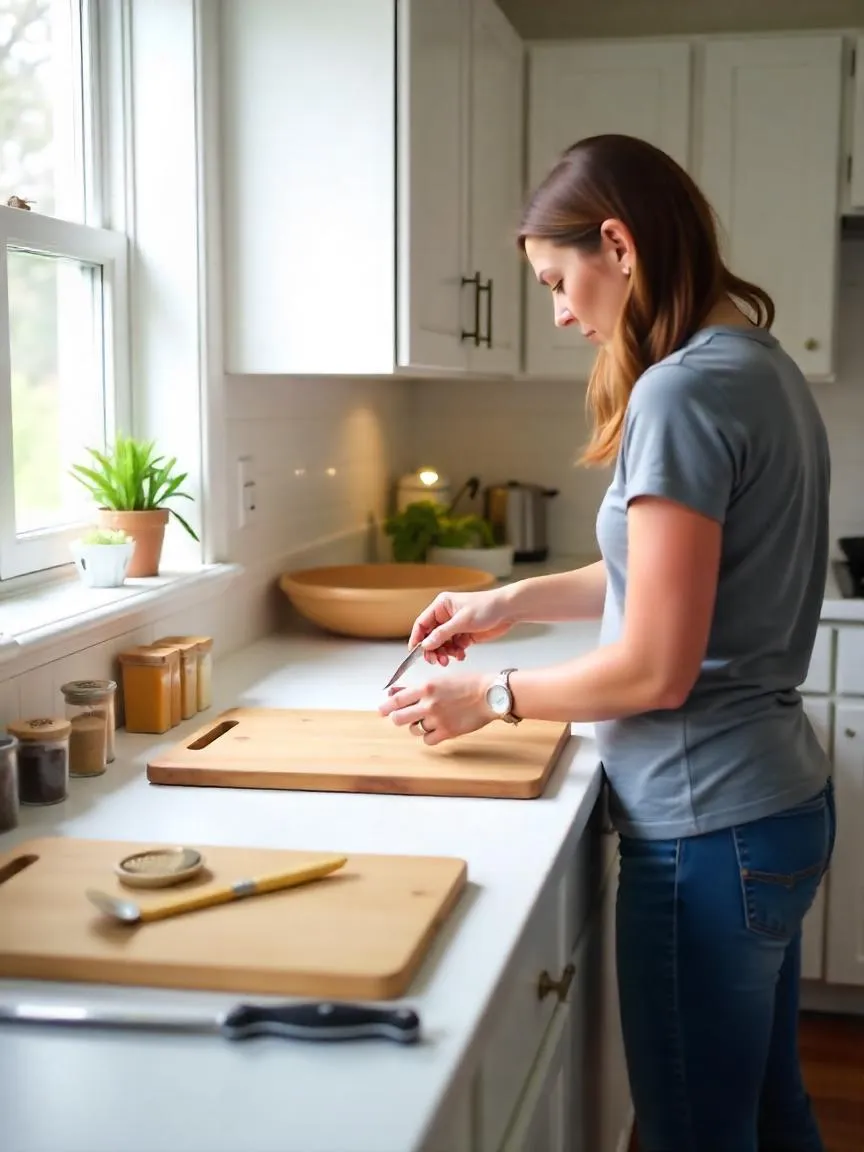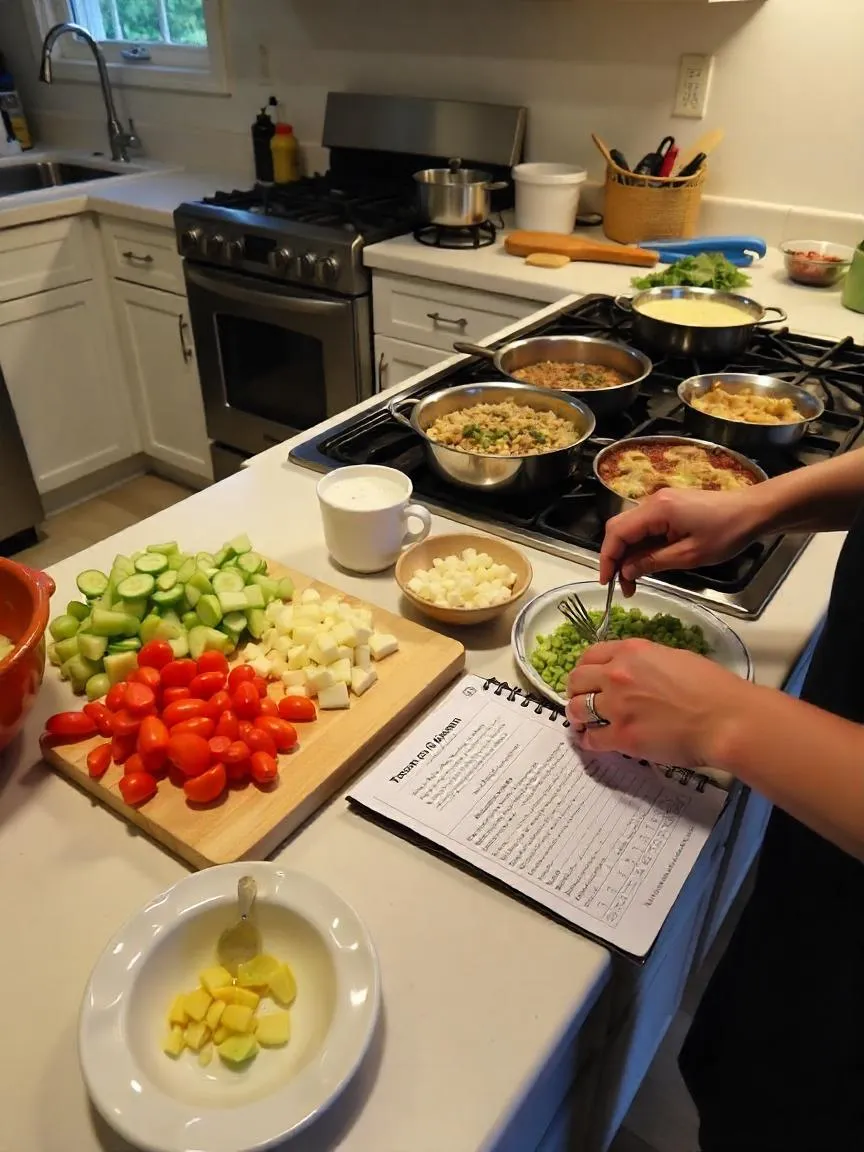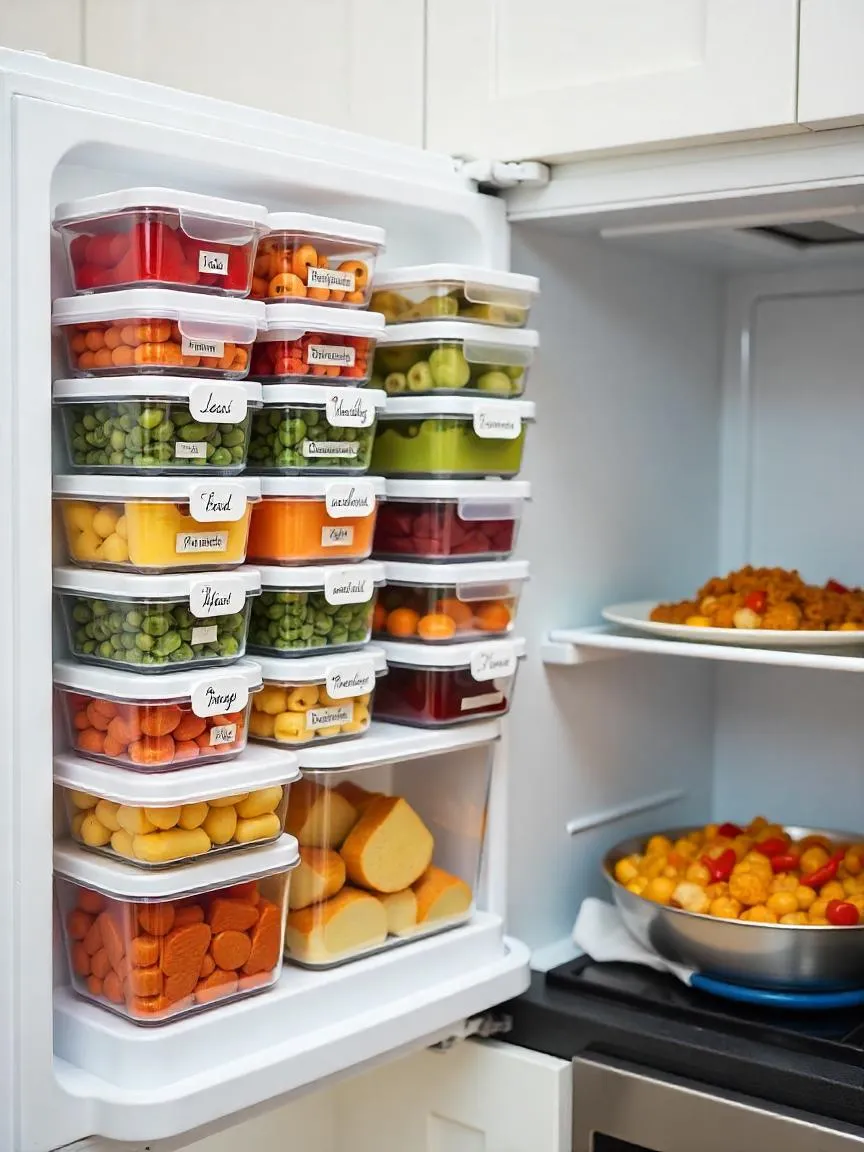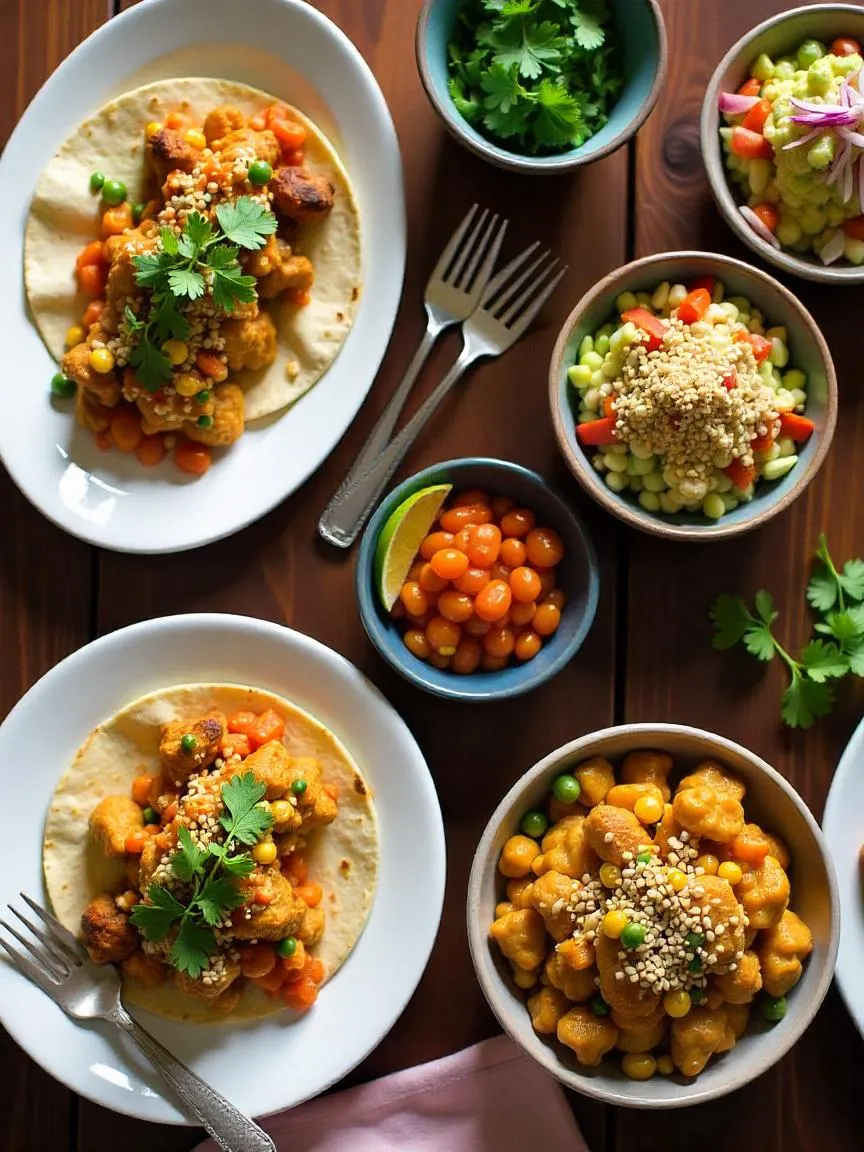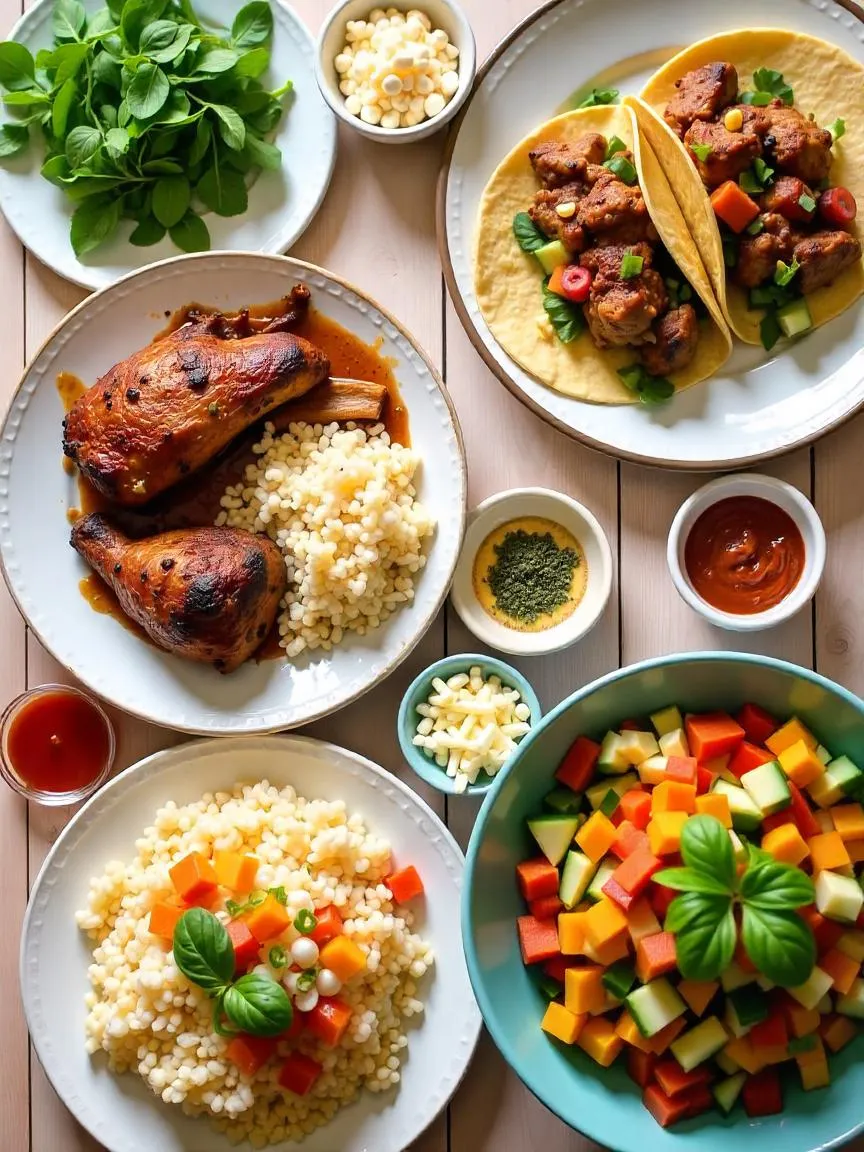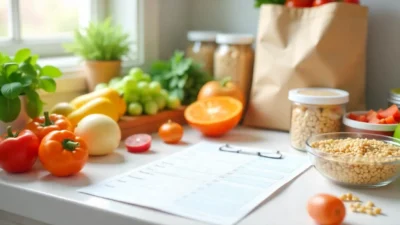Contents
- 🥘 Why Batch Cooking Works Wonders for Busy Weeks
- 🕒 How to Plan a Week’s Worth of Meals in Just 3 Hours
- 🛒 Smart Grocery Shopping Tips for Successful Batch Cooking
- 🍳 Organize Your Kitchen for Fast & Efficient Batch Cooking
- 👩🍳 The Step-by-Step Batch Cooking Process
- 🧊 Storing and Reheating Batch-Cooked Meals the Right Way
- 🍽️ Keeping Dinners Enjoyable All Week Long
- ♻️ Using Leftovers Creatively: Turn Yesterday’s Meal Into Something New
Cooking for the week doesn’t have to take over your life. By spending about three hours in the kitchen on a Sunday or a day off, anyone can prepare meals that last for seven days. This approach frees up evenings all week, giving more time to relax instead of worrying about dinner.
Many people find weekday cooking stressful with work and other responsibilities. Preparing food in advance not only cuts down daily cooking time but also reduces the need to wash dishes every night. Using simple techniques like slow cookers or batch cooking can make the process easy and efficient.
With a solid plan, cooking ahead brings variety and balance to meals without extra effort after the initial prep. It’s a smart way to eat well while keeping evenings free for other things that matter more.
🥘 Why Batch Cooking Works Wonders for Busy Weeks
In the hustle and bustle of everyday life, finding time to cook fresh meals daily can feel overwhelming. That’s where batch cooking comes in — a game-changing strategy for anyone looking to save time, reduce stress, and eat healthier without the daily effort 💡🍴
Whether you’re a busy professional, a parent juggling multiple schedules, or simply someone who wants to streamline mealtime, batch cooking offers a smart, efficient solution.
⏱️ Time-Saving Benefits of Batch Cooking
One of the biggest advantages of batch cooking is the amount of time it frees up during the week. Instead of cooking every single day, you can spend just a few hours — say on Sunday afternoon — preparing multiple meals at once. In 2 to 3 hours, you can have lunch and dinner ready for several days ahead 🕒👩🍳
Having pre-made meals stored in the fridge or freezer means:
- No more scrambling to cook after a long day
- Fewer dishes to wash daily
- Less time spent on meal prep every evening
These small time savings add up quickly — giving you back several hours each week to spend on things you actually enjoy.
🧠 Say Goodbye to Decision Fatigue
Deciding what to eat every day may seem minor, but over time it leads to what’s called decision fatigue — mental exhaustion from making too many choices. Batch cooking eliminates that daily question: “What’s for dinner?” 😩❌🍽️
By planning and preparing meals in advance, your week becomes smoother and more predictable. When you get home, there’s no need to dig through recipes or wonder if you have the right ingredients. You already know what you’re eating — and it’s ready to go ✅✨
This not only makes evenings easier but also helps reduce stress and impulsive food choices (like last-minute takeout).
🥦 Build Healthier Eating Habits with Batch Cooking
One of the greatest benefits of batch cooking is how it supports healthier eating throughout the week 🌿💪. When meals are planned and prepared ahead of time, it’s much easier to stick to nutritious choices — even when life gets hectic.
Instead of reaching for takeout or unhealthy snacks in a rush, you’ll already have balanced, home-cooked meals ready to go. That means:
- More control over ingredients and portion sizes
- Less reliance on processed or high-sodium foods
- Reduced temptation to make impulsive food decisions
By cooking in batches, you can include a variety of whole foods — like roasted veggies, lean proteins, legumes, and whole grains — in just the right portions. This sets you up for consistent, mindful eating all week long 🥗🍗🍠
Plus, batch cooking helps minimize food waste. When you prep meals using the fresh ingredients you’ve already bought, you’re less likely to let produce spoil in the fridge. Everything gets used, and your grocery trips become more intentional and efficient.
🕒 How to Plan a Week’s Worth of Meals in Just 3 Hours
Yes, you can cook for an entire week in only three hours — with the right strategy! Smart meal planning and prep starts before you even enter the kitchen. A well-thought-out plan, efficient grocery shopping, and an organized workspace make all the difference 🛒🍳
By investing a little time up front, you’ll save hours throughout the week — no more last-minute cooking, frantic ingredient hunts, or fast food fallback.
📋 Choosing the Right Recipes for Batch Cooking Success
The secret to fast and effective batch cooking lies in picking recipes that are simple, versatile, and reheat beautifully. Look for dishes that:
- Use overlapping ingredients to minimize waste and prep
- Hold up well in the fridge or freezer
- Can be easily portioned and reheated
Some ideal choices include:
- Proteins like chicken breast, ground turkey, lentils, or beans — they cook quickly and work in a variety of dishes 🐔🌱
- Vegetables such as bell peppers, onions, broccoli, zucchini, and spinach — these are quick to prep and mix well into many meals 🧅🌶️🥬
- Grains like brown rice, quinoa, or couscous — they make excellent bases for grain bowls, salads, or side dishes 🍚
Adding sauces or dressings on the side is a smart move — it helps keep textures fresh and flavors customizable through the week.
🍲 Easy, Efficient Recipe Ideas
Stick to recipes that are simple, hearty, and made with minimal ingredients. Think one-pan wonders and meals that cook all together. Popular batch cooking staples include:
- Big-batch soups and stews
- Oven-baked casseroles
- Sheet-pan meals with roasted veggies and protein
- Grain bowls with a mix of protein, veggies, and sauces
- Pasta bakes or stir-fries you can reheat in minutes
Keeping things straightforward allows you to stay within the 3-hour window — with a full fridge to show for it.
🛒 Smart Grocery Shopping Tips for Successful Batch Cooking
Efficient grocery shopping is just as important as the cooking itself. With a bit of planning, you can save both time and money — and avoid the frustration of missing ingredients or overbuying 🧾💡
Here’s how to shop like a batch cooking pro:
✅ Start with a Solid Plan
Begin by reviewing your weekly meal plan and writing down every ingredient you’ll need. Don’t rely on memory — a clear, itemized shopping list helps you stay focused and avoid impulse buys.
🧭 Organize Your List by Store Sections
Group your ingredients by category — such as produce, meat, dairy, frozen, pantry — to make your trip faster and more efficient. This way, you won’t waste time backtracking across aisles 🛒
💰 Shop Smart and Save
- Look for sales or discounts on staples like rice, beans, pasta, or frozen veggies
- Buy in bulk when it makes sense — especially for items with a long shelf life
- Choose frozen or canned versions of certain ingredients to use later in the week
📅 Stick to a Routine
Try shopping on weekend mornings, when stores are less crowded. Bring reusable shopping bags for easy packing and to stay eco-friendly ♻️👜
🚫 Buy Only What You’ll Use
Avoid overstocking your fridge! Stick to what you need for your planned recipes. Use fresh produce early in the week and frozen or canned ingredients later — this helps keep meals fresh and reduces food waste.
🍳 Organize Your Kitchen for Fast & Efficient Batch Cooking
A well-organized kitchen setup can cut your cooking time in half. Before you start, take a few minutes to prep your workspace — you’ll thank yourself later!
🧼 Clear and Prep Your Space
- Wipe down counters and keep your cooking zone clutter-free
- Set out all tools, pots, pans, knives, and measuring cups you’ll need
- Lay out containers or freezer bags ahead of time for easy storage
🍲 Group Ingredients by Recipe
Before turning on the stove, sort ingredients by meal. This “mise en place” method helps prevent mistakes and eliminates the stress of hunting down a missing spice mid-recipe.
🧊 Use Proper Storage Techniques
- Store meals in stackable, airtight containers or labeled freezer bags
- Include the meal name and prep date so you can track freshness easily
- Keep a visible section of your fridge or freezer for “ready-to-eat” meals
🔪 Keep Essentials Within Reach
Make sure cutting boards, knives, oil, spices, and utensils are close at hand. Every step saved adds up!
⚡ Maximize Cooking Efficiency
Use multiple burners and appliances like a slow cooker, Instant Pot, or air fryer if you have them. Cooking multiple components at once helps you stay on track to meet your 3-hour batch cooking goal ⏳🍽️
👩🍳 The Step-by-Step Batch Cooking Process
Mastering batch cooking comes down to three key elements: solid planning, efficient prep, and smart multitasking in the kitchen. With the right workflow, you can cook a week’s worth of meals in just a few hours — saving time, reducing stress, and keeping food fresh all week long 🗓️🥘
Let’s break down how to batch cook like a pro from start to finish.
🔪 Step 1: Prepping Ingredients Efficiently
The foundation of fast cooking is organized prep. Before you start, take 10–15 minutes to set up your workspace and prep all ingredients:
- Wash, peel, chop, and measure everything before turning on the stove
- Use time-saving tools like a sharp chef’s knife, food processor, or vegetable peeler
- Group similar tasks together — for example:
- Chop all veggies at once 🧅🥕
- Then prepare proteins (chicken, beans, tofu, etc.)
- Start cooking grains and legumes early, since they take longer
Pro Tip: Clean as you go 🧽 — it keeps your workspace tidy and reduces the cleanup mountain at the end.
✅ Bonus Tip: Make a checklist of ingredients and steps before you begin. It keeps the process on track and ensures nothing gets missed.
🔥 Step 2: Cooking Multiple Dishes at the Same Time
Now it’s time to cook — efficiently and strategically.
The goal is to have several meals cooking at once without overwhelming yourself:
- Use your oven for sheet-pan meals, casseroles, or baked proteins
- On the stovetop, boil grains while sautéing veggies or simmering soups
- Start with dishes that take longer (like stews or roasted veggies)
- Add quicker dishes like stir-fries or sauces as you go
Batch cooking appliances can help too:
- Slow cooker: great for soups or shredded meats
- Instant Pot or pressure cooker: speeds up beans, stews, and grains
- Air fryer or toaster oven: ideal for roasting or crisping side dishes
Set timers for each dish to prevent overcooking, and keep a general idea of cooking times to stay in control. A little multitasking goes a long way when done right ⏲️🍳
🧊 Step 3: Store and Label Meals for the Week
Once everything is cooked, it’s time to cool, portion, and store your meals:
- Use airtight, stackable containers or labeled freezer bags
- Include the meal name and date for quick identification
- Store fresh meals at eye-level in the fridge for easy access
- Freeze portions you won’t eat within 3–4 days
This last step ensures your food stays fresh, your fridge stays organized, and your week stays stress-free ✅
🧊 Storing and Reheating Batch-Cooked Meals the Right Way
Proper storage and reheating are key to making the most of your batch cooking efforts. Once your meals are prepped and cooked, handling them correctly will help keep them fresh, flavorful, and safe to eat all week long 🍱✅
🥡 Step 1: Store Meals Safely and Efficiently
Once your food has cooled slightly, it’s time to portion and store:
- Use airtight containers or resealable freezer bags to prevent moisture loss and contamination
- Label each container with the meal name and date so you always know what’s inside and how fresh it is 🏷️
- For freezer storage, leave a little space at the top of each container — food expands as it freezes
🧊 How Long Do Meals Last?
- In the fridge: Most meals stay fresh for 3 to 5 days
- In the freezer: Properly sealed meals can last up to 3 months
- Plan to eat more perishable meals (like salads or fish) earlier in the week, and save frozen dishes for later
🔥 Step 2: Reheat Meals Without Losing Flavor
Reheating your meals properly ensures they taste just as good as the day you made them:
- Use a microwave or stovetop on medium heat to gently warm meals
- Stir occasionally while reheating to distribute heat evenly and avoid cold spots — especially with soups, stews, or rice dishes
- For oven-friendly meals like casseroles or roasted veggies, reheating in the oven at 300–350°F (150–175°C) for 10–15 minutes helps preserve texture
Avoid overheating, which can dry out proteins or make grains mushy. A little patience during reheating pays off in flavor and texture 😋
🍽️ Keeping Dinners Enjoyable All Week Long
Batch cooking is a huge time-saver — but let’s face it, eating the same meal five nights in a row can get boring fast. That’s where a little creativity comes in! With a few smart tricks, you can keep your dinners tasting fresh and exciting all week long 🧠✨
The goal is to enjoy the convenience of batch cooking without falling into the trap of flavor fatigue.
😴 Preventing Meal Fatigue: How to Keep Things Interesting
Meal fatigue happens when we eat the same flavors, textures, or ingredients too often. The good news? You don’t need to cook something completely new every day — just mix things up with small, simple changes.
🌶️ Switch Up Flavors with Minimal Effort
- Use different sauces, spices, or marinades on the same base ingredients
- Example: Grilled chicken can become Mexican-style tacos one day 🌮, and a Mediterranean grain bowl the next 🥗
- Add a splash of hot sauce, soy sauce, tahini, or citrus to give leftovers a new life
🔥 Try New Cooking Methods
- Cook the same ingredient in different ways: roast veggies one night, stir-fry them the next
- This adds contrast in texture and taste without extra prep
🌿 Add Fresh Finishing Touches
- Sprinkle chopped fresh herbs, crushed nuts, or toasted seeds on top of reheated meals
- Add a dollop of yogurt, hummus, or a flavored drizzle to keep things lively
🥦 Rotate Side Dishes
- Swap rice for quinoa, pasta for zucchini noodles, or steamed veggies for a crunchy salad
- Playing with colors and textures — like creamy + crispy or warm + cool — keeps meals satisfying and diverse
🧩 Make Repetition Feel Like Variety
When building your meal plan, think in terms of modular meals: proteins, grains, and veggies that can be mixed and matched into different combinations throughout the week. This not only prevents boredom but also encourages balanced, wholesome eating.
A well-planned batch cook isn’t about eating the same thing every day — it’s about creating a base for endless variations that keep you looking forward to dinner each night 🍛😋
♻️ Using Leftovers Creatively: Turn Yesterday’s Meal Into Something New
Leftovers don’t have to mean boring reheats. In fact, with a little imagination, they can become the foundation for exciting new meals — saving you time, reducing food waste, and keeping your taste buds happy 🧑🍳🌍
Instead of eating the same dish on repeat, try remixing your leftovers into totally different flavor profiles and presentations.
🔄 How to Transform Leftovers Into New Meals
Whether it’s cooked meats, grains, or roasted veggies, almost any leftover can become part of a new and delicious creation. Here are a few easy and creative ideas:
🌮 Reinvent with Global Flavors
- Roasted pork becomes street-style tacos with salsa and slaw
- Shredded chicken turns into spicy burritos, creamy pasta, or comforting chicken soup
- Cooked veggies can be puréed into soups or added to stir-fries and omelets
🍳 Reinvent Grains and Sides
- Leftover rice makes excellent fried rice or rice bowls — just add eggs, veggies, and soy sauce
- Mashed or roasted potatoes become crispy hash browns or breakfast skillets with minimal effort
- Quinoa or couscous can go into salads with lemon, herbs, and feta
🧂 Keep Simple Add-Ons on Hand
Having a few easy mix-ins and toppings ready can elevate any leftover into something new:
- Sauces (pesto, tzatziki, hot sauce, vinaigrettes)
- Fresh greens (spinach, arugula, mixed lettuce)
- Cheeses (feta, shredded cheddar, goat cheese)
- Crunchy toppings (nuts, seeds, crispy onions)
- Fermented goodies (pickled veggies, kimchi, sauerkraut)
Toss leftovers into a grain bowl, wrap them in a tortilla, stuff them into a pita, or layer them on toast — and you’ve got a brand-new meal with hardly any extra cooking 👌✨

